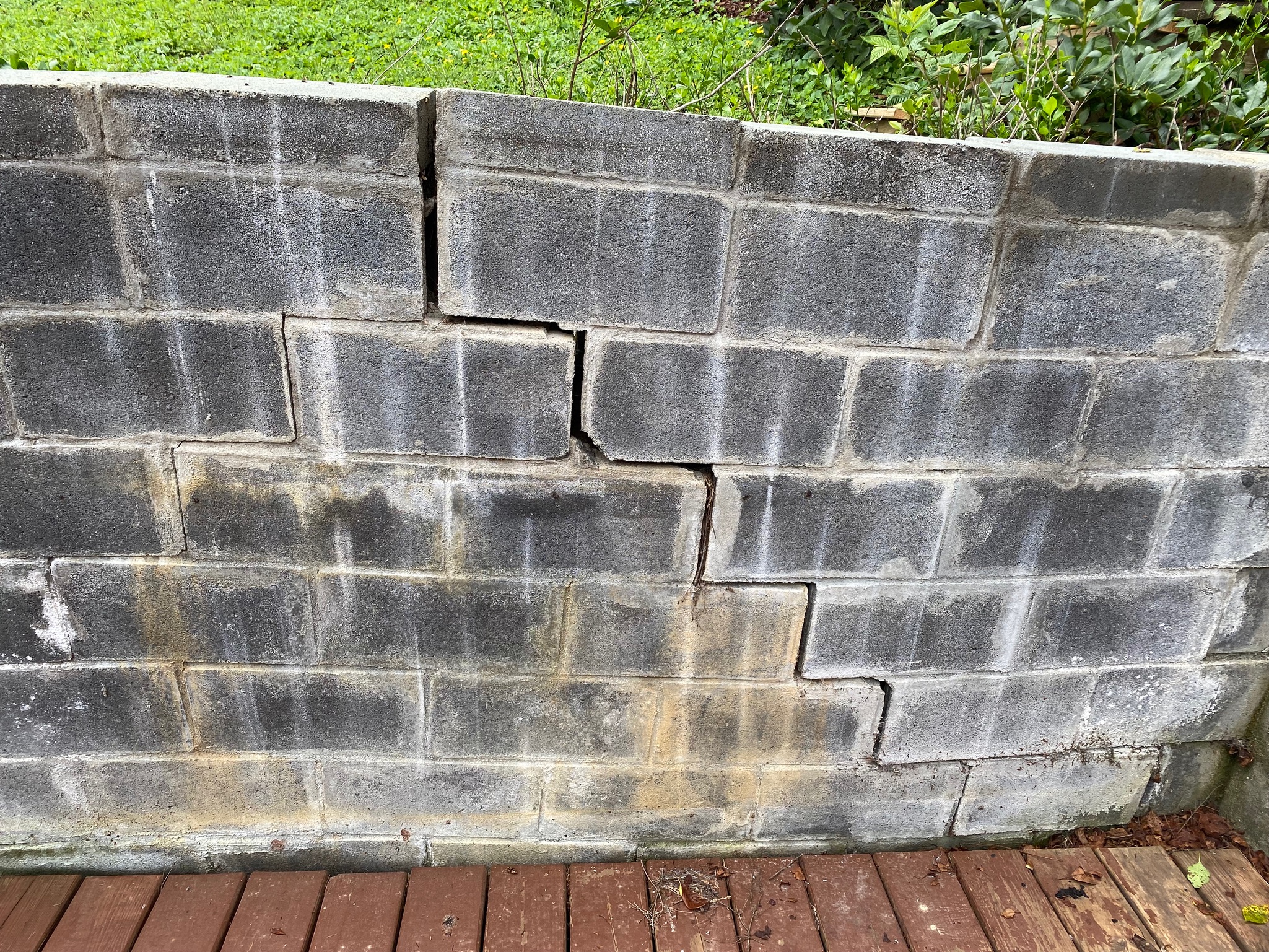
Have you ever wondered why your basement stays damp even after you’ve implemented traditional drainage solutions? The culprit might be capillary action, an intriguing natural phenomenon that allows water to defy gravity and ascend through porous materials, including your home’s foundation. This silent process can result in persistent moisture issues, potentially compromising the structural integrity of your property. We can discuss how this process works, its implications for your home, and ways to mitigate its effects, offering you a new perspective on managing foundation moisture.
Key Takeaways
- Capillary action, driven by surface tension and adhesive forces, allows liquid to climb narrow spaces against gravity.
- This process can lead to moisture transport through porous materials like concrete in building foundations, potentially causing dampness and structural issues.
- Regular foundation assessments, using tools like moisture meters and thermal imaging, can detect early signs of moisture problems due to capillary action.
- Prevention strategies include implementing waterproof membranes, designing effective drainage systems, and using materials that minimize the effects of capillary action.
- Professional inspections provide thorough assessments, identify subtle signs of moisture issues, and recommend specific solutions to manage capillary action effects on foundations.
Understanding Capillary Action
In the realm of fluid dynamics, capillary action is a crucial phenomenon you need to understand. It’s the process that allows liquid to defy gravity and climb up narrow spaces like tubes or absorbent material, even against the force of gravity. This phenomenon is what powers the liquid transport in many natural and man-made systems.
The secret behind capillary action lies in the interplay between cohesive forces, which hold the liquid molecules together, and adhesive forces, which make the liquid stick to solid surfaces. When these forces are balanced, the liquid rests. But when adhesive forces prevail, capillary action begins. The liquid starts clinging to the walls of the tube, rising until equilibrium is reached.
Understanding capillary dynamics helps you appreciate how critical this phenomenon is, not just in scientific labs, but in everyday life too. From the ink flowing in your pen to the oil moving up in a lamp wick, capillary action is at work.
But remember, it doesn’t end there. It has far-reaching implications, some of which you’ll explore in the world of nature, but that’s a topic for another time.
Role of Capillary Action in Nature
You’re now aware of what capillary action is; let’s examine its role in nature.
Consider how capillary action plays out in natural phenomena, such as the way trees absorb water from the ground.
Then, think about its broader impacts on ecosystems, shaping the ways in which life as we know it functions and thrives.
Capillary Action Explained
Capillary action might seem like a complex concept, but it’s critical to many natural processes. It’s a phenomenon that allows liquid transport to occur against gravity, driven by surface tension, adhesive, and cohesive forces. This action is responsible for what’s known as capillary rise, where liquids spontaneously ascend in a narrow space such as a tube or porous material.
Think of capillary action as a molecular tug of war. The adhesive forces between the liquid and the tube’s material pull the liquid upwards, while the liquid’s own cohesive forces try to keep it together and resist this upward motion. The result of this battle is capillary rise, where the liquid climbs up to a specific height.
The efficiency of capillary action depends on the diameter of the tube or porous material. Smaller tubes enable a greater capillary rise due to increased surface contact, enhancing the adhesive forces.
In nature, capillary action plays a vital role in the liquid transport of water from the roots to the leaves in plants. The narrow xylem vessels act as capillaries, facilitating the upward movement of water.
Through understanding this, we’re a step closer to comprehending the intricate workings of nature.
Examples in Nature
Mother Nature’s mastery of capillary action can be seen in various natural phenomena. This seemingly simple process plays a pivotal role in maintaining ecosystem balance and promoting plant growth, among other things.
- Tree Roots and Soil Moisture: Tree roots draw upon capillary action to absorb soil moisture. This water transport mechanism allows trees to stay hydrated, even in drier conditions.
- Plant Growth: Capillary action isn’t just crucial for trees. It’s vital for all plant growth. It ensures that water and nutrients cycle from the soil to the plant’s cells, promoting healthy development.
- Sediment Movement: Capillary action also impacts sediment movement. It’s what causes water to bind soil particles together, affecting the soil’s erosion resistance.
- Animal Behavior: Even some animal behaviors are influenced by capillary action. Birds, for example, use it to draw nectar from flowers.
In understanding these roles, you gain a deeper appreciation for the role capillary action plays in our world.
It’s not only essential for foundational moisture in construction but also in the natural processes that sustain life on Earth.
Impact on Ecosystems
While it’s clear that capillary action plays a significant role in individual natural phenomena, its broader implications for ecosystems may not be as immediately evident. The truth is, it’s fundamental in maintaining ecosystem balance. By drawing water upwards against gravity, capillary action indirectly aids in the distribution of nutrients.
Consider the role of this process in soil wetness. It’s not just about quenching the thirst of plants; it’s a form of nutrient transport, essential for the plants to thrive. When water ascends, it doesn’t travel alone. It carries dissolved substances, including crucial nutrients, from the soil straight to the plant roots.
Also, let’s not forget about the micro-organisms in the ecosystem. Many of them rely on the moisture provided through capillary action. It’s a lifeline for them, and in turn, they contribute to the decomposition of organic matter, enriching the soil with more nutrients.
Capillary Action’s Impact on Building Foundations
You’ve grasped the basic principle of capillary action, now let’s consider how this scientific phenomenon impacts building foundations.
Moisture can be drawn through porous materials like concrete, a process that’s driven by capillary action, which can lead to issues with dampness in structures.
Understanding this can assist you in identifying potential foundation problems and finding effective remedies.
Capillary Action Explained
Imagine your house as a sponge, absorbing water from the ground. This isn’t mere fancy, but a scientific phenomenon called capillary action. It’s the silent, invisible force behind water movement through porous materials like soil, bricks, or concrete.
Understanding capillary action is easier when you consider the following points:
- Capillary action is driven by surface tension and adhesion. Water molecules are attracted to the material, causing the liquid to rise in narrow spaces against gravity.
- The smaller the pores, the higher the water can rise. This is why soil absorption is so significant in capillary action.
- Capillary action isn’t limited to upward motion. It can also push water horizontally or even downwards, depending on the material’s orientation.
- Moisture can reach your home’s foundation through capillary action, especially if the structure is in contact with saturated soil.
This knowledge should make you more aware of the importance of soil and water management around your home.
Foundation Moisture Problems
Capillary action is like a silent intruder, causing moisture problems that can significantly impact your home’s foundation. This phenomenon can lead to soil saturation around the foundation, promoting water infiltration that can compromise foundation integrity.
Understanding and implementing moisture control methods are critical preventive measures. By monitoring humidity levels and adjusting them accordingly, you can reduce the risk of excess moisture.
Drainage solutions also play a key role in combating capillary action. When properly installed, these systems can divert water away from your home, minimizing soil saturation and thereby preserving the integrity of your foundation.
Building materials significantly influence how capillary action affects your home. Certain materials are more susceptible to water infiltration and need to be considered when designing and building your home.
| Preventive Measure | Effectiveness |
|---|---|
| Humidity Control | High |
| Drainage Solutions | High |
| Material Choice | Variable |
| Soil Saturation Monitoring | Medium |
| Regular Maintenance | High |
Detecting Foundation Moisture Problems
Foundation moisture problems can easily sneak up on you, leading to significant structural damage if left undetected.
It’s crucial to be proactive in moisture detection, regularly conducting a foundation assessment to spot any potential issues early on.
Here’s a scientifically-backed, step-by-step guide to help you:
- Visual Inspection: Start by visually inspecting your foundation. Look for signs such as damp walls, condensation, mold, or mildew.
- Use a Moisture Meter: A moisture meter is a tool that measures the moisture content in your building materials. It can give you a more precise understanding of the moisture levels in your foundation.
- Check for Structural Changes: Bulging walls, cracks, or shifts in your foundation can be indicators of moisture problems.
It’s important to monitor these changes over time.
- Professional Inspection: If you’re unsure, it’s best to call in a professional.
They’ve the training and tools to accurately assess your foundation and identify any issues not easily visible to the untrained eye.
Prevention and Solutions for Moisture Issues
Addressing moisture issues before they become a severe problem is the key to maintaining a healthy foundation. Moisture barriers, such as waterproof membranes, are a fundamental solution. These barriers prevent water from penetrating the foundation, thereby reducing the risk of moisture-related damage.
To supplement this, consider drainage solutions. A well-designed system directs water away from the foundation, reducing the potential for capillary action. This could involve installing French drains or grading the landscape to guide water flow.
Landscaping strategies also play a crucial role. Overwatering plants near your foundation or allowing foliage to grow too close can exacerbate moisture issues. You’ve got to be mindful of these factors.
Soil treatments can further assist in preventing moisture problems. Certain treatments can reduce the soil’s ability to retain water, thus lessening the chance for capillary action to occur.
Foundation sealing is another effective measure. A sealed foundation offers increased protection against external moisture.
Ventilation systems and humidity control within the home also contribute to moisture management. Proper ventilation ensures moisture doesn’t accumulate, and controlling your home’s humidity levels can prevent the formation of condensation, a common source of foundation moisture.
Case Studies: Capillary Action and Foundation Damage
While implementing preventive measures can significantly reduce the risk of moisture-related damage, it’s equally important to understand the real-world impact of capillary action on building foundations.
Let’s look at some case studies that illustrate how capillary rise and soil saturation can compromise foundation integrity.
- Case Study 1: A residential property experienced significant foundation damage due to capillary rise. The home’s construction materials were poorly chosen and susceptible to moisture migration. As a result, the foundation integrity was compromised, leading to costly repairs.
- Case Study 2: A commercial building’s inadequate drainage systems led to soil saturation and subsequent capillary action. This created a cycle of water retention and release, which gradually weakened the foundation.
- Case Study 3: An agricultural structure, due to its location, was exposed to severe environmental factors that increased soil moisture levels. The capillary action resulted in foundation damage that threatened the entire structure’s stability.
- Case Study 4: A coastal home had no preventive measures in place to mitigate capillary action, leading to constant moisture migration and eventual foundation failure.
These cases underline the importance of utilizing appropriate construction materials, designing efficient drainage systems, and considering environmental factors to prevent foundation damage due to capillary action and soil saturation.
Frequently Asked Questions
What Are the Basic Principles of Fluid Mechanics Involved in Capillary Action?
When you’re looking at capillary action, you’re seeing fluid mechanics in action.
It’s about how fluid properties, like cohesion and adhesion, interact with surface tension. The liquid’s attraction to the capillary tube’s surface causes it to rise against gravity.
It’s an intricate balance between the fluid’s weight and the forces of cohesion and adhesion. This phenomenon can impact foundation moisture, as water may ascend through tiny pores in the material.
How Does Capillary Action Affect the Growth and Health of Plants?
Capillary action draws water from the soil up into plant roots. It’s a vital process for plant health.
When there’s adequate soil moisture, capillary action effectively hydrates plants, promoting growth.
But if the soil’s too wet or dry, capillary action can’t function properly. This imbalance can stunt plant growth and even lead to their death.
What Types of Building Materials Are Most Susceptible to Foundation Moisture Damage?
Wood materials, porous concrete, and brick structures are most susceptible to foundation moisture damage.
The capillary action of water in clay soils can cause moisture to rise into these materials.
Over time, you’ll notice decay in wood, crumbling in concrete, and flaking in bricks.
It’s essential to select materials wisely and consider moisture barriers to protect your building’s foundation.
What Are the Early Signs of Capillary Action Causing Foundation Damage?
You’ll spot early signs of capillary action causing foundation damage by observing your building’s structure.
Look for foundation cracks, they’re a common indicator.
Also, be vigilant for moisture intrusion. It’s not always visible, so you might notice a damp or musty smell first.
If you’re seeing paint peel or wallpaper bubble, that’s another sign.
These issues shouldn’t be ignored, as they can lead to serious structural damage over time.
Are There Any Specific Climate Conditions That Increase the Risk of Foundation Moisture?
Sure, certain climate conditions do increase the risk of foundation moisture.
You’ll find that areas with high rainfall or humidity levels can contribute to increased moisture sources.
Also, climate variations such as sudden thawing or freezing can cause soil expansion and contraction, leading to foundation moisture.
Therefore, it’s crucial to understand your local climate and its potential impact on your home’s foundation.
Conclusion
So, you see, understanding capillary action isn’t just science trivia. It’s key to managing foundation moisture and maintaining structural integrity. By recognizing its role in nature and impact on buildings, you’re better equipped to detect problems and implement preventative measures. Don’t forget, regular monitoring and professional inspections can nip issues in the bud. Remember, proactive, informed action is your best defense against damage caused by capillary action.

Seal-tite Basement Waterproofing Co. is a full service basement environment contractor. We carry an A+ Better Business Bureau rating. We repaired over 40,000 homes and structures in Virginia, West Virginia, Tennessee, and North Carolina. We are fully insured and licensed. We have worked in all types of locations, including residential and commercial locations, government agencies, colleges, hospitals, churches, and condo associations.
Seal-tite® offers a lifetime transferable warranty. We carry a Class A Contractor’s License and we are fully insured. Our satisfied customers range from government agencies to businesses, hospitals, colleges, churches, and thousands of homeowners. Your home is probably the single largest investment you will make in your lifetime. Don’t wait, call Seal-tite® to help make your home dry, safe and livable.

